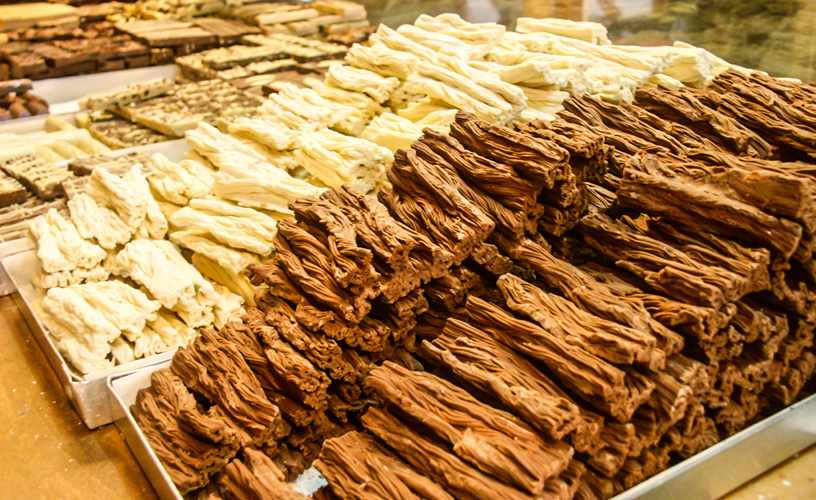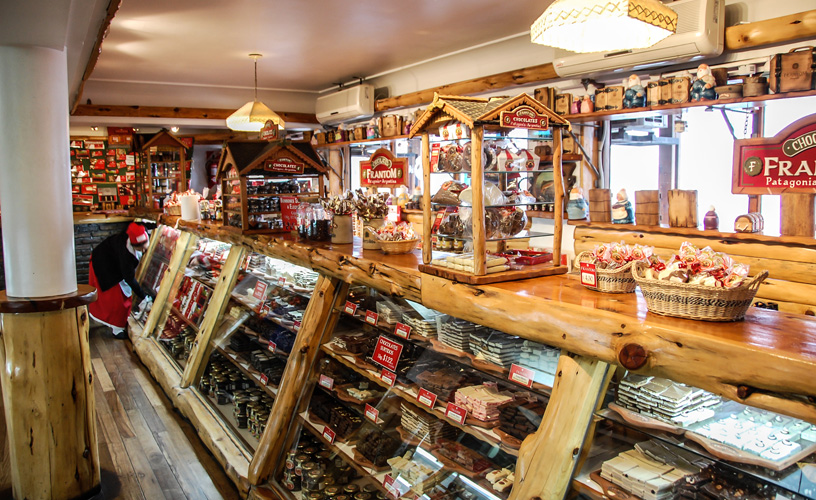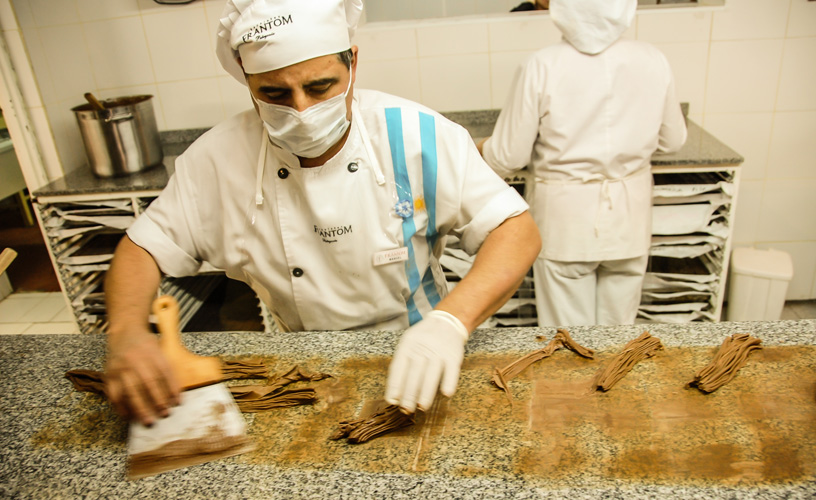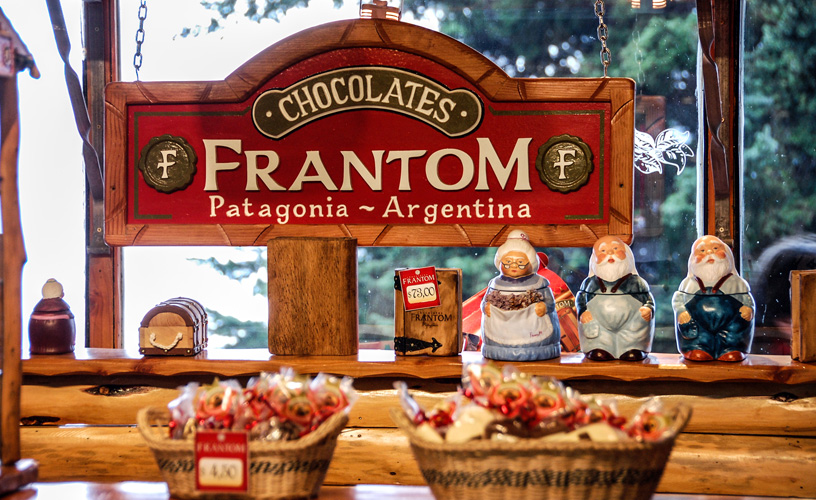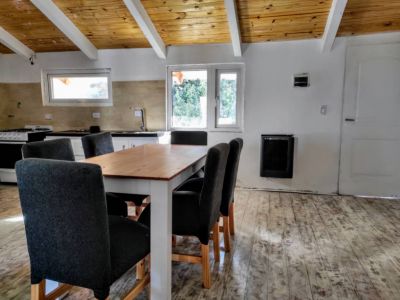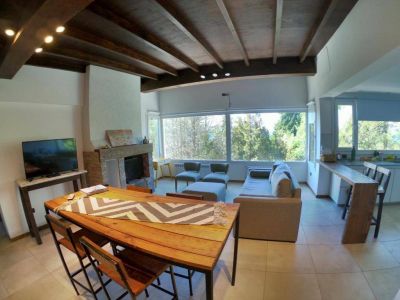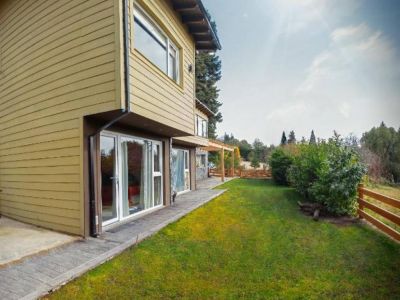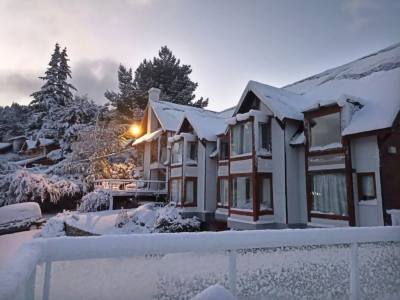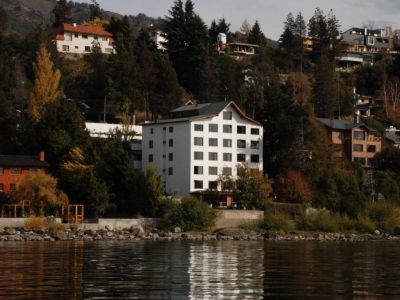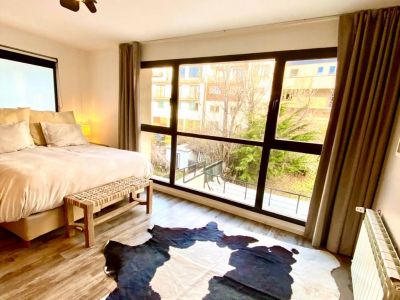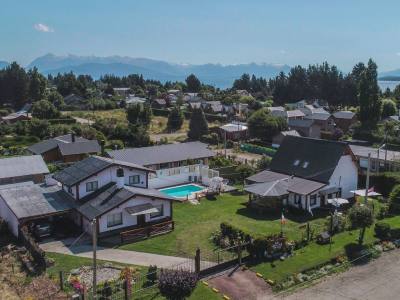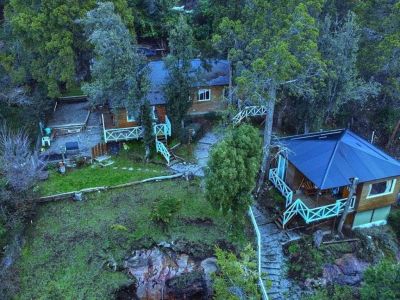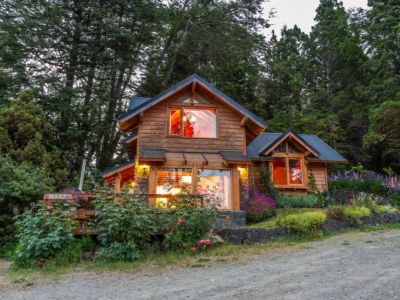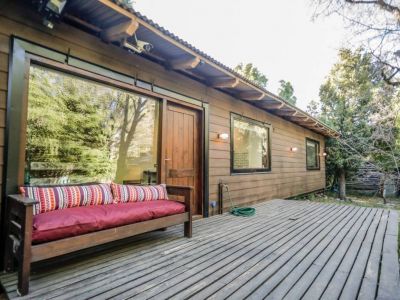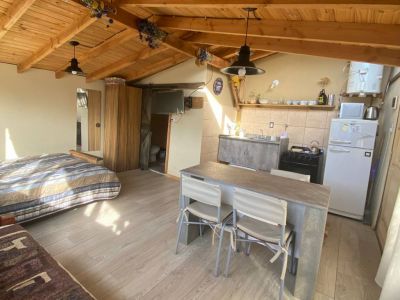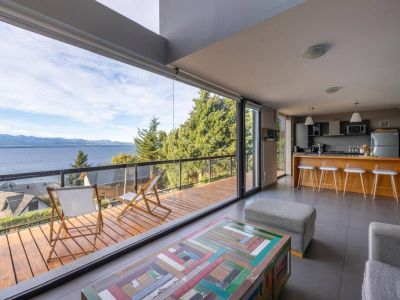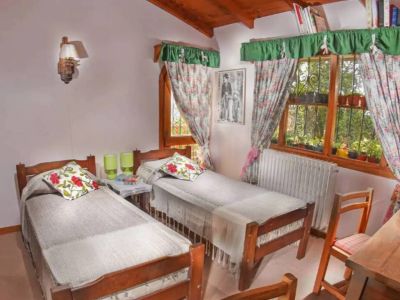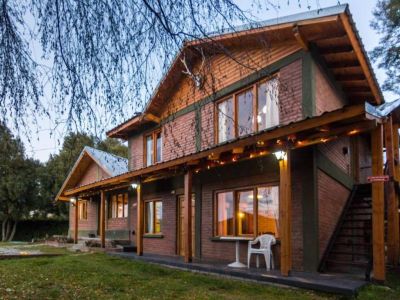Who can resist tasting chocolate when the aroma filters through the open door of the factory, lures and seduces us shamelessly? As soon as we entered the venue, we could observe the chocolate maker showing his art in situ on the impeccable marble table in the production area. Stainless steel pots, wide spatulas, some colorful cardboard boxes were the only tools Manuel needed in order to start working. As we were waiting for him to put his shoulders to the wheel, we thought it was curious that the fruit of the cocoa tree, native of the warm areas in the Gulf of Mexico, would be such a praised drink thousands of kilometers away. The point is that it features a high protein and calorie content and this turns it into a perfect drink to fight the cold in the Andean Patagonian region.
Chocolate Bark in Bariloche
One of the chocolate factory signs contributed with some knowledge about the route covered by cocoa ever since its origins to this date. The Spaniards who reached the American shores took cocoa down to Europe to continue consuming that excellent drink.
About two hundred years later, the European arrived in the area of the Patagonian lakes. The German and Swiss grandmothers brought along their chocolate recipes and the custom of preparing it in different fashions: as a hot drink and in bars. The secrets of this task have been passed on from generation to generation to keep this tradition alive.
Mónica Pons
Eduardo Epifanio
Contact of the excursion or tour
Chocolateria Frantom
J. M. de Rosas esq.Panozzi, San Carlos de Bariloche, Río Negro, Agentina
Phone: +54 294-4522391
